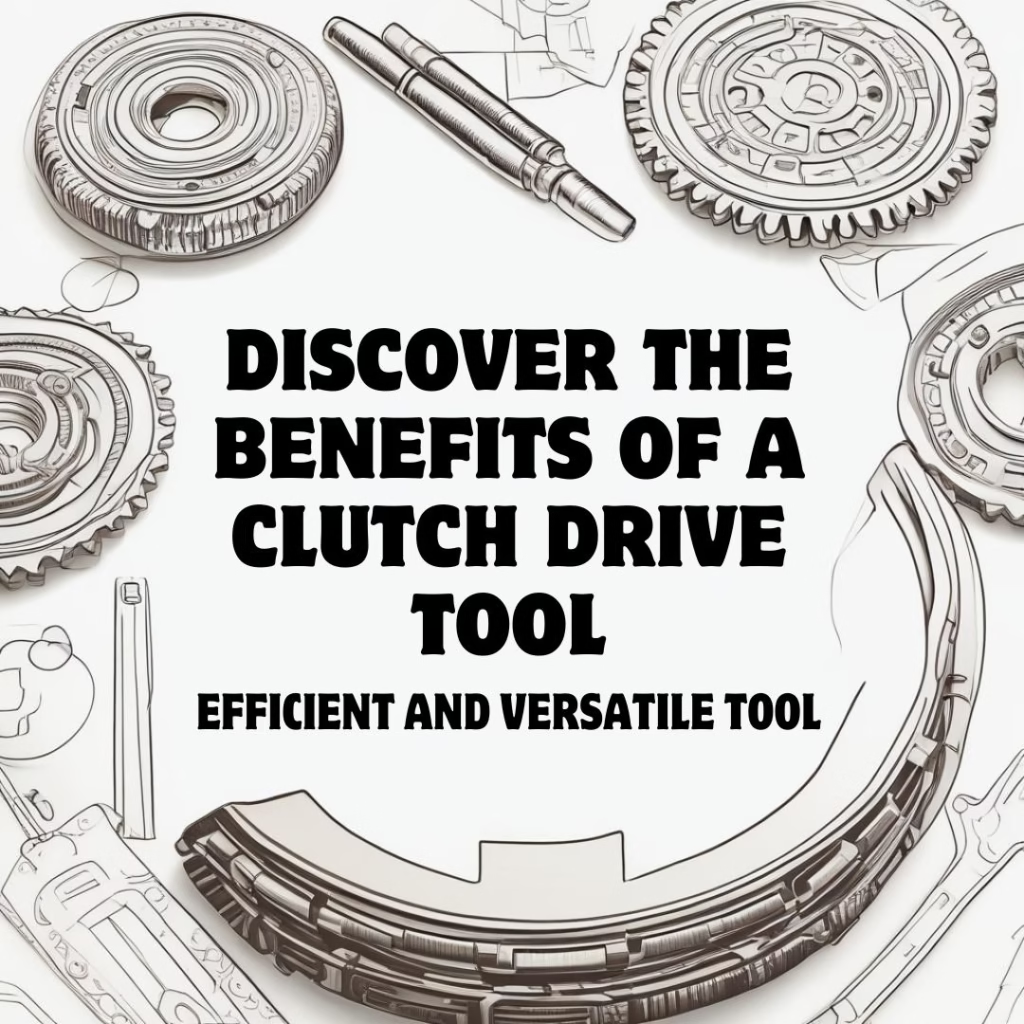A clutch drive tool is a specialized device engineered to transfer torque effectively, featuring a clutch mechanism that prevents over-tightening and protects fasteners from damage. If you’re wondering what is a clutch drive tool, this tool is especially beneficial for tasks that demand precision and controlled force, making it ideal for use in assembly lines and sensitive mechanical applications. Its ability to provide consistent torque helps ensure quality and reliability in various projects.
Understanding Clutch Drive Tools
A clutch drive tool is a specialized device used to tighten or loosen fasteners with precise control over torque. Unlike conventional tools, this innovative tool incorporates a clutch mechanism that automatically disengages once the specified torque level is reached, preventing over-torquing and potential damage to the fasteners. This feature not only enhances the accuracy of applications but also prolongs the lifespan of both the tool and the fasteners. Clutch drive tools are particularly valuable in settings where consistent torque is critical, such as in automotive assembly, electronics manufacturing, and other precision engineering tasks. By ensuring a reliable and controlled application of force, these tools help maintain the integrity of the components being worked on.
Components of a Clutch Drive Tool
The key components of a clutch drive tool consist of several crucial elements:
Clutch Mechanism
This component is responsible for managing the application of torque. It automatically disengages when the desired torque level is reached, preventing over-tightening and ensuring that fasteners are secured without damage.
Drive Sockets
Drive sockets play a vital role in connecting the clutch drive tool to various types of fasteners. They come in different sizes and shapes to accommodate a wide range of fastener types, making the tool versatile for various applications.
Housing
The housing of the clutch drive tool serves multiple purposes. It protects the internal mechanisms from dust, debris, and damage, ensuring the tool operates smoothly over time. Additionally, the housing is designed to provide a comfortable grip, allowing users to maintain control and leverage during operation.
These components work together to provide accuracy and safety during use.
How Clutch Drive Tools Work
Mechanism of Action
The clutch mechanism in a clutch drive tool enables it to engage and disengage based on the predetermined torque setting. This innovative feature is essential for preventing over-tightening, which can lead to damage to both the tool and the fastener. By ensuring that the tool automatically disengages when the desired torque is reached, it promotes consistent performance and enhances the longevity of both the tool and the components being fastened.
Types of Clutch Mechanisms
Slip Clutch
The slip clutch disengages once the torque limit is reached, allowing for smooth operation. This type of mechanism is user-friendly, making it easy to handle for a variety of tasks. However, it’s important to note that slip clutches may be less suitable for heavy-duty applications, where higher torque levels are needed.
Pros
- Provides smooth operation
- Easy to use and control
Cons
- Less effective for heavy-duty tasks
Positive Clutch
In contrast, the positive clutch fully locks until it is manually released. This design is particularly advantageous for high-torque applications, as it ensures a secure and consistent grip on fasteners. However, it requires more effort to control, which may not be ideal for all users or situations.
Pros
- Ideal for high-torque applications
- Ensures a strong and consistent grip
Cons
- Requires more effort to manage
Applications of Clutch Drive Tools
Automotive Industry
Clutch drive tools play a crucial role in the automotive industry, where they are extensively used for various repairs and maintenance tasks.
- They are essential for tightening bolts in engine assemblies, ensuring that each bolt is secured to the correct torque specification.
- Additionally, these tools are invaluable for loosening lug nuts during tire changes, allowing for safe and efficient wheel replacements.
The precision offered by clutch drive tools helps mechanics avoid damaging critical components, which can save time and reduce repair costs.
Construction and Manufacturing
In the realms of construction and manufacturing, clutch drive tools are vital for ensuring precision in various applications.
- They are commonly used on assembly lines for repetitive tasks, where consistent torque application is essential for maintaining quality and safety.
- Furthermore, in construction projects that require exact torque specifications—such as securing beams or installing fixtures
These tools help guarantee that each connection is made securely and accurately, reducing the risk of structural failures.
Household and DIY Projects
For homeowners and DIY enthusiasts, clutch drive tools are incredibly versatile and useful.
- They can assist with tasks such as fixing furniture, where precise torque is necessary to maintain stability and durability.
- Additionally, these tools are ideal for installing shelves or appliances, ensuring that all fasteners are tightened correctly to support weight and functionality.
Their ease of use and reliability make clutch drive tools a valuable addition to any home toolkit.
Benefits of Using a Clutch Drive Tool
Increased Precision
The clutch mechanism in a clutch drive tool enables precise torque application, ensuring that fasteners are tightened to the optimal level—neither too tight nor too loose. This accuracy is essential in various applications, as it helps maintain the integrity of components and prevents issues that may arise from improper fastening. Whether in automotive repairs or delicate assembly tasks, the ability to control torque with precision is a significant advantage.
Reduced Risk of Stripping
One of the key benefits of using a clutch drive tool is its ability to prevent over-tightening. By automatically disengaging at the set torque level, these tools significantly reduce the risk of stripping screws or bolts, which can compromise the effectiveness of the fastening. This not only extends the lifespan of the materials being used but also preserves the integrity of the tool itself, leading to fewer repairs and replacements over time. As a result, users can achieve more reliable and durable connections in their projects.
Versatility and Convenience
Clutch drive tools are incredibly versatile, making them suitable for a wide range of tasks across different fields. From automotive work, such as engine assembly and tire changes, to household repairs like fixing furniture or installing shelves, these tools can handle it all. Their adaptability means they can easily fit into any toolkit, providing convenience for both professionals and DIY enthusiasts alike. With a clutch drive tool at your disposal, you can tackle various projects with confidence and efficiency.
Different Types of Clutch Drive Tools
Torque tools can be manual, electric, or air-powered, each employing different methods for torque limitation. The effectiveness of these methods varies depending on the specific application. To determine which torque tool is best suited for your needs, refer to our guide on the various torque wrench delivery mechanisms:
Hand Tools
Click Wrench
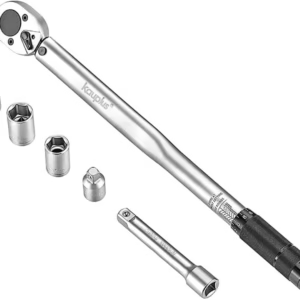
The click wrench deflects by 3° and produces an audible click when the desired torque is achieved. The operator should both hear and feel this click, signaling them to cease applying force. Since click wrenches do not physically stop users from applying excess torque, they are most suitable for less critical applications.
Break-over wrench
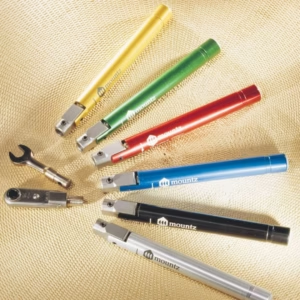
Break-over wrenches operate similarly to click wrenches by limiting torque through deflection. When the set torque is reached, a joint between the head and shaft “breaks,” causing a deflection of 20-90°. This feature helps prevent operators from over-torquing without the need to reset the wrench. As a result, break-over wrenches provide a greater level of torque control, making them more suitable for critical applications compared to click wrenches.
Cam-over Wrench
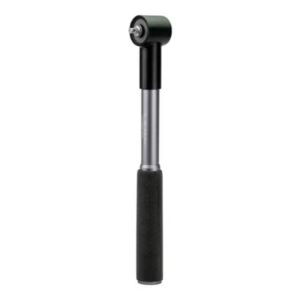
Cam-over wrenches provide a physical barrier against over-torquing fasteners by slipping or disengaging their clutch once the specified torque is reached. Even if operators attempt to continue using the tool on the same fastener, it will simply slip again, preventing any additional torque from being applied. This complete control over torque delivery makes cam-over wrenches ideal for the most critical torque applications. Additionally, hand torque screwdrivers also utilize cam-over torque technology to regulate torque delivery.
Power Tools
Clutch Drive Electric Screwdrivers
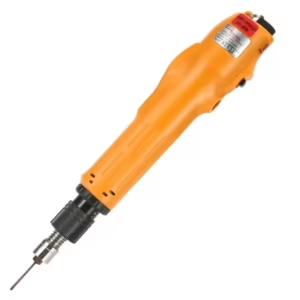
Clutch-drive electric screwdrivers limit torque similarly to cam-over wrenches by disengaging their clutch once the appropriate amount of force has been applied. This feature offers a high level of torque control, making them suitable for critical applications. However, unlike hand tools or DC-controlled tools, these screwdrivers deliver force at a constant rate. As a result, they can potentially damage sensitive components, such as plastics, and should be avoided in delicate applications.
DC Control Electric Screwdriver
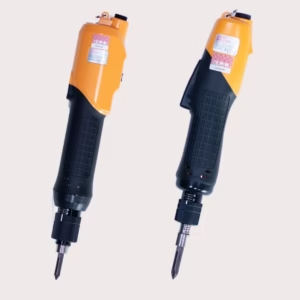
Instead of directly limiting torque like clutch drive tools, DC-control electric screwdrivers manage torque indirectly by regulating the electric current supplied to the screwdriver’s motor. These DC control tools enhance productivity by enabling the use of a single tool in place of 2 to 8 different tools. Additionally, they facilitate error-proofing and real-time monitoring, allowing for the collection and storage of fastening data for traceability purposes.
Pneumatic Wrench
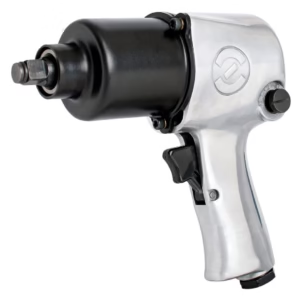
Continuous drive pneumatic wrenches use compressed air to generate torque, with a clutch mechanism to limit that torque. Although they are generally less precise than electric tools, continuous-drive pneumatic wrenches can provide significantly higher torque levels with accuracy.
Choosing the Right Clutch Drive Tool
Factors to Consider
When selecting a clutch drive tool, several key factors should be taken into account:
- Torque Range: Make sure the tool’s torque range aligns with the specific requirements of your tasks. A tool with an appropriate torque range will ensure optimal performance and prevent damage to fasteners or components.
- Build Quality: Look for tools made from durable materials, as high-quality construction contributes to the tool’s longevity and reliability. A well-built tool can withstand the rigors of use and is less likely to fail under pressure.
- Brand Reputation: Choosing a tool from a reputable brand can provide peace of mind. Trusted brands typically have a history of quality and customer satisfaction, which can be crucial when investing in tools for professional or personal use.
Maintenance Tips
To keep your clutch drive tool in top condition, follow these maintenance tips:
- Regular Cleaning: Clean the tool frequently to remove dust, debris, and any residue that may accumulate during use. This not only helps maintain performance but also prevents damage to internal components.
- Proper Storage: Store your tool in a dry, safe environment to protect it from moisture and potential damage. Using a designated toolbox or storage case can help keep it secure and organized.
- Periodic Inspections: Regularly inspect the tool for signs of wear and tear, such as frayed cables, damaged parts, or any other issues. Early detection of problems can prevent more significant damage and ensure your tool remains safe and effective for use.
Conclusion
What is a clutch drive tool? It is an essential device designed for precise torque application, featuring a clutch mechanism that prevents over-tightening and protects fasteners from damage. Its accuracy and reliability make it particularly valuable in critical applications such as automotive repairs, manufacturing, and household projects. By understanding the various components, mechanisms, and types of clutch drive tools, as well as considering factors like torque range and build quality, users can select the right tool for their specific needs. Regular maintenance, including cleaning, proper storage, and periodic inspections, will further enhance the tool’s performance and longevity. Overall, clutch drive tools are versatile and indispensable for anyone seeking efficiency and precision in their fastening tasks.
FAQs
- What is a clutch drive tool used for?
It is used for tightening or loosening fasteners with controlled torque. - How does a clutch drive tool prevent over-tightening?
The clutch mechanism disengages once the desired torque is reached. - What are the types of clutch mechanisms?
Common types include slip clutches and positive clutches. - Can I use a clutch drive tool for DIY projects?
Yes, it’s versatile and suitable for home repairs and installations. - What components are in a clutch drive tool?
It includes a clutch mechanism, drive sockets, and durable housing. - How do I choose the right clutch drive tool?
Consider torque range, build quality, and compatibility with other tools. - Why is precision important in clutch drive tools?
Precision prevents damage to fasteners and ensures proper assembly. - How do I maintain my clutch drive tool?
Clean it regularly, check for wear, and store it properly. - What industries use clutch drive tools?
They are used in automotive, construction, manufacturing, and household tasks. - Are clutch drive tools beginner-friendly?
Yes, they are easy to use and help prevent common mistakes like over-tightening.
If you like reading this, you may also like
Thank you for reading, for more interesting articles visit our homepage.

